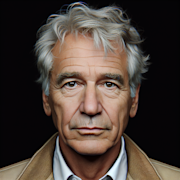Classic Movies: Where Art and Technology Collide

Classic movies have always been a significant part of the entertainment industry, captivating audiences for decades. They stand the test of time and continue to be celebrated for their storytelling, memorable characters, and timeless themes. But what many people may not realize is that classic movies represent a beautiful convergence of art and technology. In this blog post, we will explore how classic movies have successfully brought together the artistic vision of filmmakers and the technological advancements of their time.
The Golden Age of Classic Movies
The period between the 1920s and 1960s is often referred to as the “Golden Age” of classic movies. This era saw the birth of some of the most iconic films in history, including “Gone With The Wind,” “Casablanca,” and “Citizen Kane.” These films not only showcased incredible storytelling but also introduced groundbreaking techniques that shaped the landscape of cinema.
Technological Innovations in Filmmaking
During the Golden Age, filmmakers pushed the boundaries of technology to enhance their artistic vision. The introduction of synchronized sound with “talkies,” such as “The Jazz Singer” in 1927, revolutionized the film industry and paved the way for the development of sound design as an essential part of storytelling.
Additionally, advancements in camera technology allowed directors to experiment with different angles, lighting, and visual effects. The film “Citizen Kane,” directed by Orson Welles in 1941, is a prime example of the innovative use of deep focus cinematography, showcasing the convergence of artistry and technological prowess.
The Marriage of Visual Effects and Artistry
Visual effects have played a crucial role in classic movies, seamlessly blending art and technology. While modern blockbuster films often rely heavily on computer-generated imagery (CGI), classic movies had to rely on practical effects and innovative techniques to achieve their desired visual impact.
Miniature Models and Matte Paintings
Before the era of CGI, filmmakers used miniature models to create grand-scale scenes and breathtaking landscapes. In the classic movie “Gone With The Wind,” the burning of Atlanta was achieved through a combination of matte paintings and carefully crafted miniature models. This marriage of artistry and technology allowed filmmakers to transport audiences to a different time and place.
Optical Effects and In-Camera Tricks
Classic movies often employed optical effects and in-camera tricks to create astonishing visual sequences. Alfred Hitchcock’s “Vertigo” (1958) made groundbreaking use of the Dolly Zoom effect, also known as the Vertigo effect, to evoke a sense of disorientation and unease. This effect, achieved through a combination of zooming in and tracking the camera backward simultaneously, showcased the artistic vision of the director, utilizing the available technology of the time.
The Importance of Film Restoration
Preserving classic movies and ensuring their longevity requires a delicate balance between art and technology. Film restoration is a painstaking process that aims to recreate the original look and sound of a film, often requiring the collaboration of skilled technicians, archivists, and filmmakers.
Digitization and Color Correction
Digitizing classic films not only ensures their preservation but also allows for color correction and enhancing image quality. By using advanced technology, technicians can restore faded colors, remove scratches, and improve overall visual clarity. This process respects the original artistic intent while leveraging modern technological capabilities.
Audio Restoration and Remastering
Alongside visual restoration, audio remastering plays a vital role in preserving classic movies. Technicians meticulously clean up audio tracks, removing pops, crackles, and background noises, to preserve the film’s original sound. Advances in audio technology have made it possible to enhance the overall audio experience while maintaining the authenticity of the original recording.
Legacy and Influence on Modern Films
Classic movies continue to inspire new generations of filmmakers, leaving a lasting legacy on the industry as a whole. The artistry and technological achievements showcased in these films have paved the way for modern cinema and continue to shape the way movies are made today.
Storytelling and Character Development
Classic movies were known for their compelling storytelling and well-developed characters. Filmmakers today draw inspiration from these timeless narratives and the depth of their characters. The blend of art and technology in classic movies serves as a reminder that technology should always enhance storytelling rather than overshadow it.
Filmmaking Techniques
Many filmmaking techniques utilized in classic movies are still relevant today. The innovative use of lighting, composition, and camera movement can be observed in contemporary films, demonstrating the lasting impact of classic movies on the visual language of cinema. Directors continue to experiment with and build upon the techniques pioneered during the Golden Age, further pushing the boundaries of what is artistically possible.
Conclusion
Classic movies are a testament to the harmonious collision of art and technology. From the Golden Age to the advent of film restoration, they have captured the imagination of audiences while pushing the technological boundaries of their time. As we continue to appreciate and preserve these cinematic masterpieces, we should recognize and celebrate the way they have shaped the art and technology of filmmaking. Through their legacy, classic movies serve as an enduring reminder of the potential that exists when art and technology come together on the silver screen.

Desmond van der Walt
Journalist
More From Classics Authority Movies

Movie
Witness for the Prosecution (1957)

Movie
Through the Lens of Time: Classic Cinema's Enduring Impact on Society

Movie
Timeless Tropes: Classic Movie Themes That Continue to Resonate

Movie
Whiplash (2014)

Movie
Some Like It Hot (1959)

Movie
Cinematic Time Capsules: Classic Films that Transport You to Another Era





